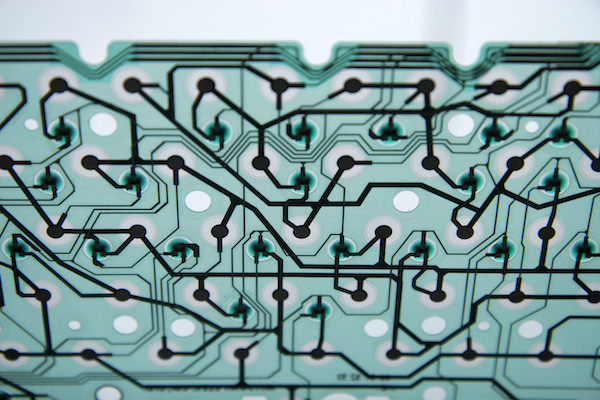
[Image above] Credit: Grant Hutchinson; Flickr CC BY-NC-ND 2.0
Ever since their discovery about seven years ago, MXene materials have been gaining momentum. [In case you haven’t been paying attention, MXenes are 2-D transition metal carbides and nitrides.]
Which—when you consider the materials’ long list of useful properties and potential applications—is not the least bit surprising.
For example, we’ve reported on potential applications for MXenes as gas sensors, battery electrodes, and electromagnetic shielding, but the materials have a long list of other potential uses as well.
However, one type of application has thus far remained largely absent from that list—flexible devices, such as wearables, foldable electronics, electronic skins, and adaptable displays.
Flexible electronics are certainly forecast to play a major role in our digital futures. But it’s no simple task to find a suitable material for flexible electronics—one with good electrical conductivity that can be maintained even when the material is repeatedly bent, stretched, pulled, and deformed.
While MXenes’ conductive properties make them good candidates for electronics, previous fabrication methods have mostly limited the form of these materials to stiff sheets rather than bendable films.
Now, a team of scientists from Texas A&M University (College Station, Texas) has developed a technique to build flexible MXene thin films that could enable new possibilities for future flexible electronics.
Using an aqueous assembly process called layer-by-layer deposition, the team applied layers of 2-D metal carbides—they used Ti3C2Tx nanosheets, derived from the parent Ti3AlC2 MAX phase—in thin sheets on a glass substrate, layering the MXenes in between polymer sheets.
By sequentially depositing layers of MXene materials with polymers, the researchers built robust composite thin films, held tightly together and tightly to the substrate’s surface by attractive electrostatic interactions between the layers of negatively charged MXenes and positively charged polyelectrolytes.

Figure 1. Structural and morphological characterizations of MXene multilayers. (A) Schematic of the PDAC/MXene LbL assembly process. Images of (B) immersion and (C) spray assembly of multilayer coatings of varying number of layer pairs on glass. (D) A cross-sectional SEM image of the multilayer coating. (E) Ultraviolet–visible (UV-vis) spectra of MXene multilayers on glass. (F) Absorbance values at 770 nm versus number of layer pairs. a.u., arbitrary units. (G) Growth profile of the multilayers on glass. (H) Root-mean-square (RMS) roughness versus number of layer pairs. Credit: Science Advances
But what’s really key to these robust films is that they can also survive large-scale deformations while maintaining electrical conductivity, a necessary characteristic for materials suitable for flexible electronic devices.
Putting the materials to the test, the scientists show that the layered films hold up relatively well to repeated cycles of bending, stretching, pulling, and twisting—and despite the physical deformation, the materials still maintain their electrical conductivity.
In the open access paper describing the work, published in Science Advances, the researchers show that they can successfully deposit layers by immersion or spraying onto a glass substrate—plus the technique also works for a variety of substrate materials, including cloth, flexible or stretchable plastics, and nylon fiber, opening a wide swath of potential applications.
And in addition to vast possibilities for diverse kinds of flexible devices, MXene thin films could also enable strain sensors to detect deformation of materials or objects.
The open-access paper, published in Science Advances, is “Surface-agnostic highly stretchable and bendable conductive MXene multilayers” (DOI: 10.1126/sciadv.aaq0118).
Did you find this article interesting? Subscribe to the Ceramic Tech Today newsletter to continue to read more articles about the latest news in the ceramic and glass industry! Visit this link to get started.
